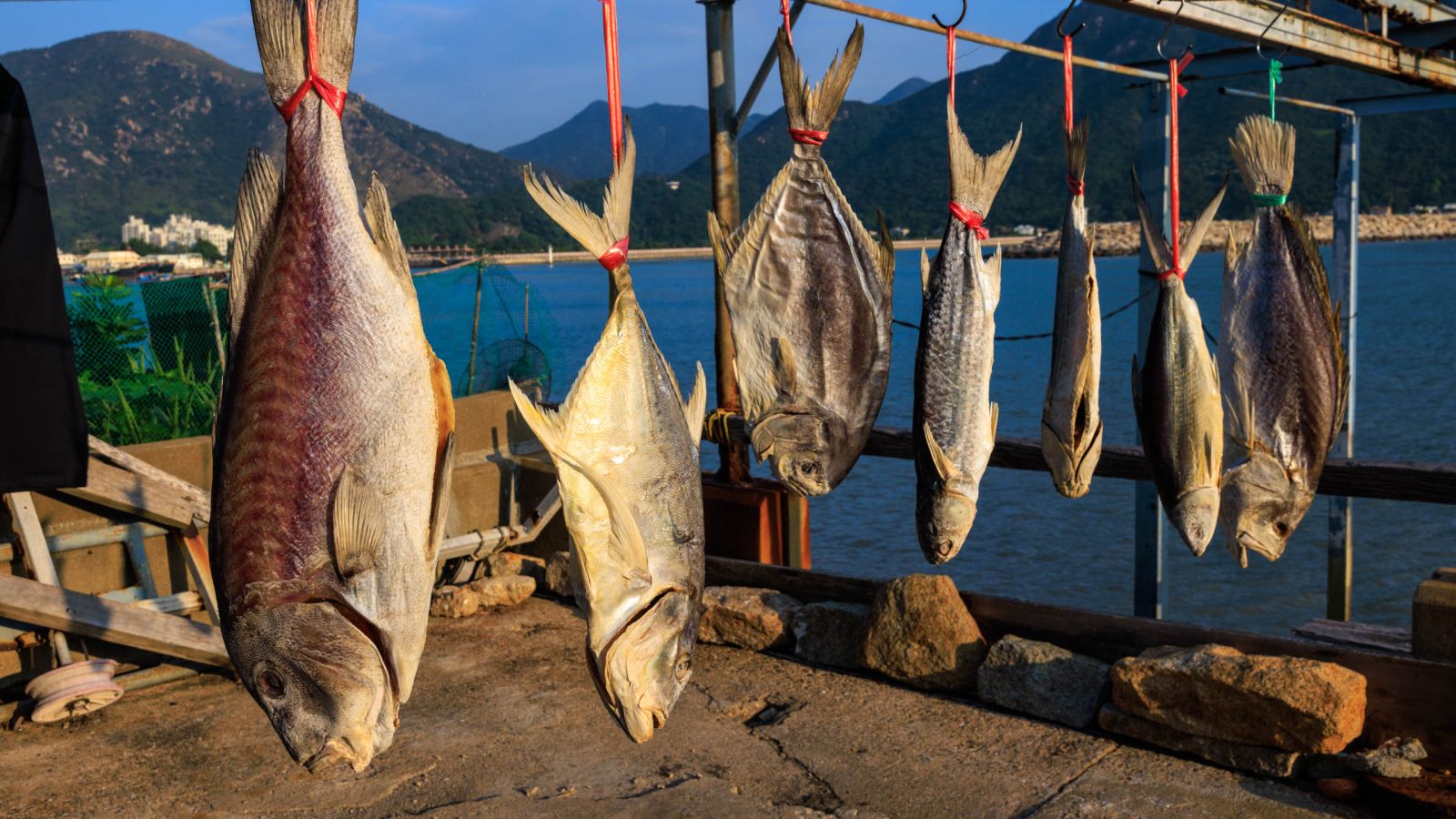Harvested from the sea and combined with copious amounts of sea salt from local farms, the Tanka people of Tai O have perfected the art of creating shrimp paste from these simple ingredients. You will find the briny fermented aroma of this condiment following you whenever you go around Hong Kong’s watertown. It is always the classic souvenir you can bring back home – and try to appreciate it more if you can as its production is gradually becoming a history of the place.
The waters outside the fishing village offer the perfect ground for krill, which is a type of shrimp used for making the shrimp paste. Nowadays the villagers still produce the paste in town but are no longer using the ingredients found locally, ever since the trawling ban came into effect in 2013 where the fishermen are no longer permitted to catch crabs and shrimps now. Being left with no choice, they go outside the city’s boundaries for the shrimp hunting instead. The villagers typically trade for the day's catch with the fishermen at dawn, as the krill, being nocturnal creatures, swim closer to the surface at night to evade predators.
.jpg)
Nevertheless, due to the outlawing of trawling, only two factories remain in Tai O – Cheng Cheung Hing Shrimp Paste Factory (鄭祥興蝦醬廠), and Sing Lee Shrimp Sauce & Paste Manufacturer (勝利香蝦廠). To survive, they've had to relocate their operations to the Guangdong regions, leaving only the final stages of processing in Tai O.
The real question is - should we still consider the shrimp paste as a “Made in Hong Kong” product, when no local ingredient is used and the early processing doesn’t take place in Tai O? Despite it being crowned as an official intangible cultural asset of Hong Kong, there is no sign from the government to protect the fishermen and shrimp paste makers to keep the culture thriving, but imposing the trawling ban to worsen their hardship. Development is inevitable for future sake but perhaps the urban planners could have done more to keep different needs and interests balanced, so that the vibrant cultures of this “fishing village” can be sustained?
.jpg)










